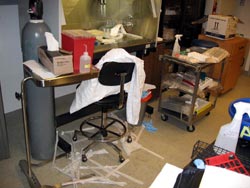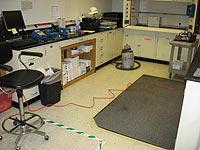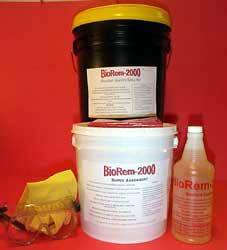A clean and well-organized laboratory sets the foundation for a safe working environment.
It also is important to follow basic personal hygiene practices such as not eating or drinking in laboratories and washing your hands after working with hazardous materials. Eating, drinking, or the application of cosmetics in the laboratory is strictly prohibited.
There are no "clean areas" in a laboratory. Separate break rooms or kitchenettes must be used for all food, drink, cosmetics, and free from the storage of any biological, chemical or radioactive hazard.
Common findings relevant to lab hygiene:
General laboratory housekeeping unsatisfactory:
Routine maintenance in the laboratory must be improved. Chemicals and equipment that are not in use must be properly stored or disposed of. Walkways, benches, and active workspaces must free from obstructions. Ongoing experiments must be organized, labeled, and contained, leaving ample workspace for safe work practices.
Evidence of eating and drinking/cosmetics used in the lab:
Under no circumstances may food, drink, or cosmetic products (exception: hand cream) be present in the lab. This includes storage of unopened food, water bottles, coffee mugs, nail polish, lipstick, etc. Empty wrappers, cups, containers, etc., must be discarded before entering the laboratory. Samples specifically intended for analysis or animal use must be clearly labeled as such.
Trip hazards identified: Walkways need to be kept free of obstructions and/or cords that cross over walkways need to be removed or secured to the floor with duct tape.
Supplies for hand-washing not available:
Paper towels and soap for your laboratory may be requested from General Services or purchased.
Spill response supplies not available:
Absorbent pads, paper towels, vermiculite, or oil dry must be available to clean up spills. Materials used to clean up hazardous waste must be labeled and treated as hazardous waste.





